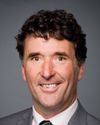Mr. Speaker, Parks Canada is contributing to government efforts to reduce the federal deficit by decreasing its operating budget by $29.2 million. In addition, the agency must also absorb salary increases as announced in budget 2010, along with inflationary increases. To do this, Parks Canada is undertaking several measures to improve internal efficiencies and reduce costs while focusing on agency priorities and quality service delivery to Canadians on our important mandate, including consolidating and streamlining service centres and the national office; aligning the seasonality of its workforce across functions to the highest requirements; and focusing recreational boating service at canals and creating new waterway management units that are 100% dedicated to canals.
In 2011, national historic sites under the administration of Parks Canada were generally open from the Victoria Day weekend to the Thanksgiving weekend. In 2012, the majority of national historic sites have maintained similar opening and closing dates; however, some sites opened on June 1 and closed on the Labour Day weekend. There was no change to the 2012 operating season at historic canals. No decision has been made with respect to operating hours for the 2013-2014 season at those canals.
The reductions made by Parks Canada will have no impact on support provided by the agency for national historic sites not administered by Parks Canada, federal heritage buildings, heritage railway stations, heritage lighthouses or historic places, including the Canadian Register of Historic Places and the Standards and Guidelines for the Conservation of Historic Places in Canada.
In 2013, Parks Canada will move to self-guided visitor activities at less visited national historic sites while maintaining guided activities at the busiest national historic sites. No Parks Canada national historic sites have been closed as a result of the reductions.
The overall reductions related primarily to national historic sites include the following: approximately 90 FTEs in field units, $5.2 million; 54 FTEs in service centres, $3.8 million; and 24 FTEs at the national office, $1.8 million. This amounts to a total of 168 FTEs, $10.8 million. Please note that these reductions do not include cuts related to historic canal operations, as analysis is ongoing.
Parks Canada will continue to maintain programs and services across its parks and sites to tell the stories that are important to our national identity, manage species at risk, provide meaningful experiences that promote an understanding and appreciation of Canada and support communities through tourism, as it has done for the last 100 years.


















